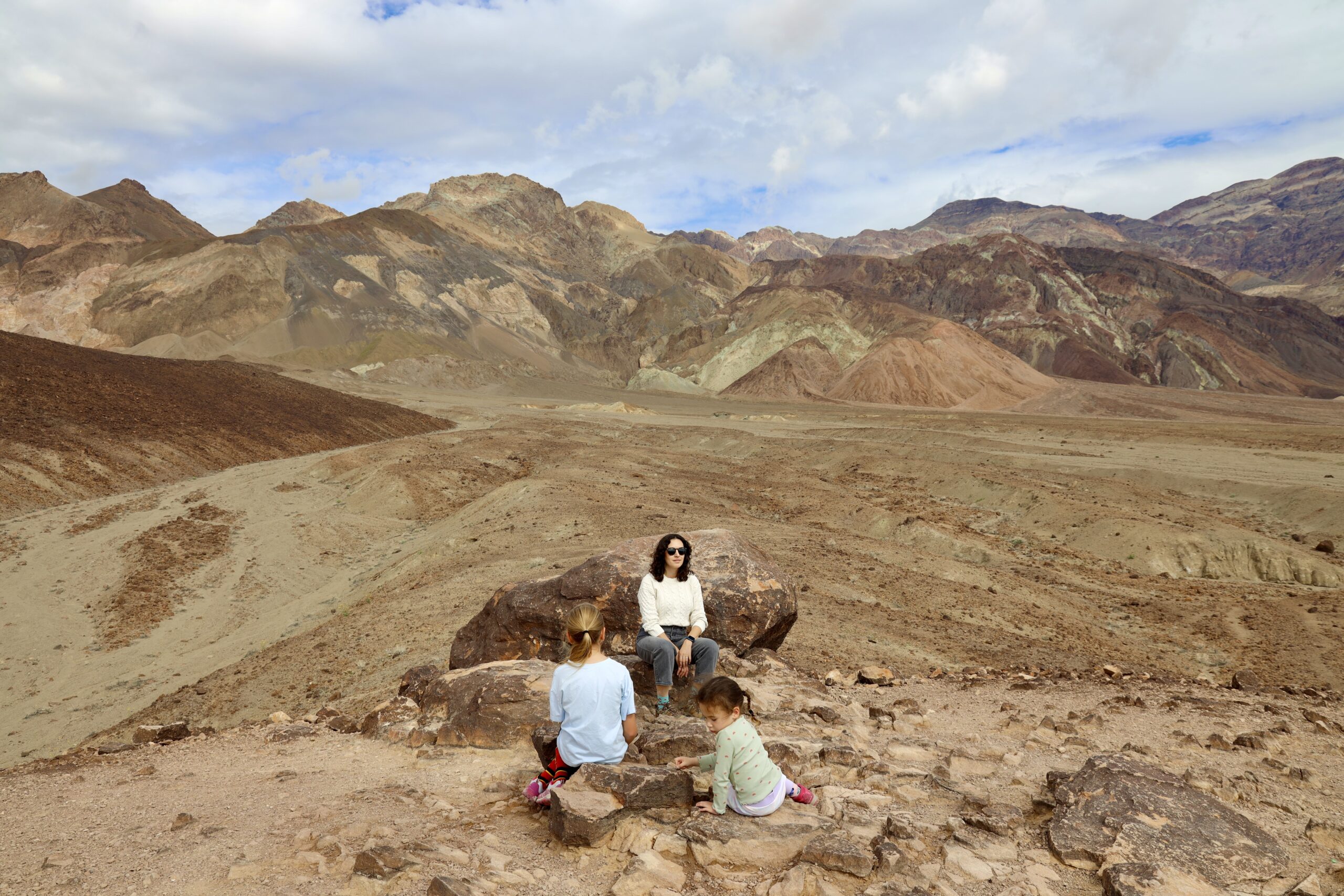
Death Valley National Park is a natural wonder that is sure to leave a lasting impression on visitors. Over millennia, the vast desert wilderness has been shaped by erosion, extreme temperatures, and mineral deposits that have painted the canyons in colors.
During our recent trip to Death Valley National Park with kids, we had the opportunity to explore the park’s top sights and hiking trails, and the experience was truly remarkable. Let’s review everything you need to keep in mind before your trip to this National Park.
Affiliate Disclosure: Some of the links in this post may be affiliate links, which means I may earn a commission if you click through and make a purchase, at no additional cost to you. I only recommend products and services I use and love. As always, all opinions are my own.
Where is Death Valley National Park?
Death Valley National Park is situated in the Mojave Desert of eastern California, near the Nevada border. It is approximately a two-hour drive from Las Vegas (which is also the closest airport). Covering over 3 million acres, the park is the largest national park in the lower 48 states.
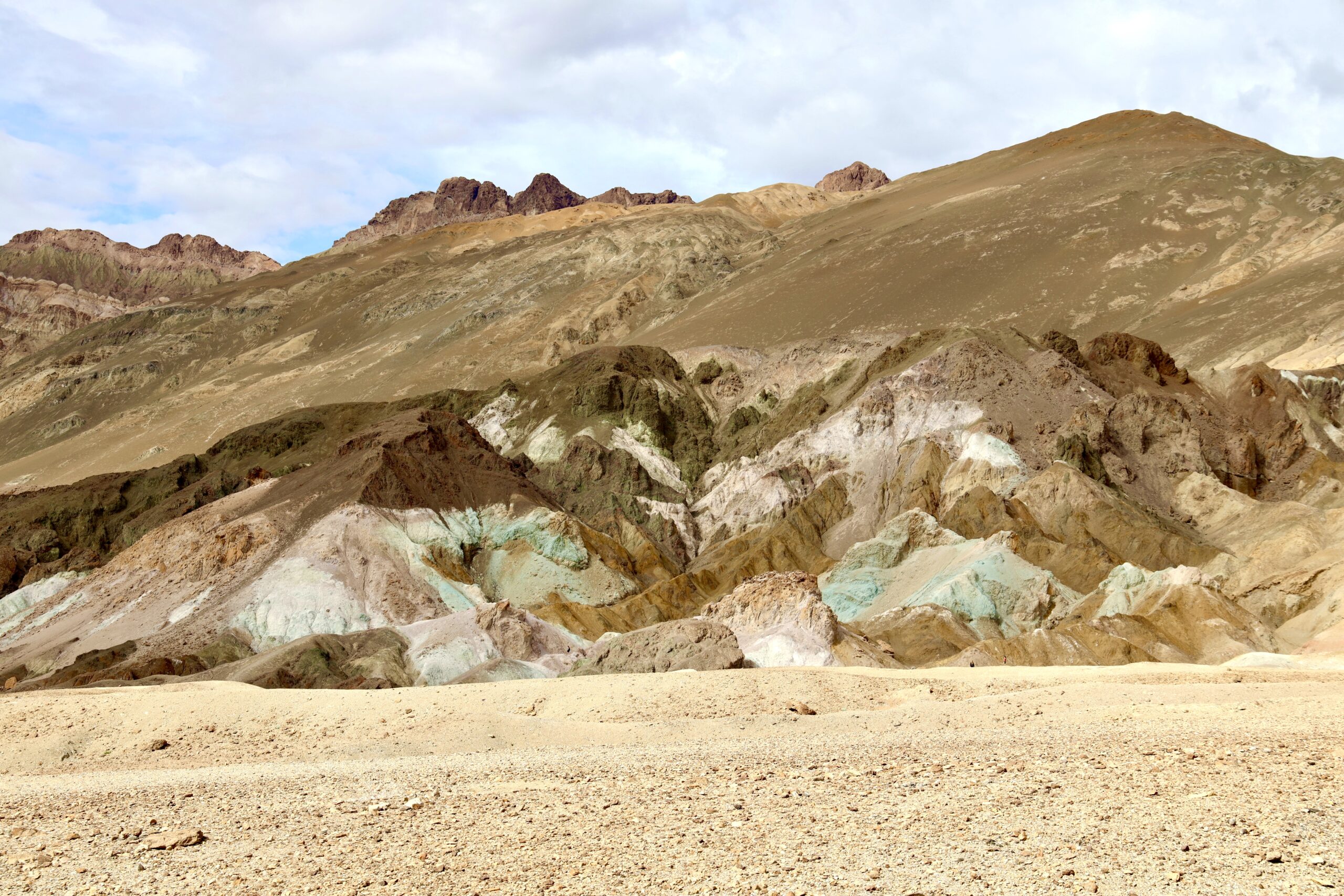
Despite its ominous name, Death Valley is a stunning destination, offering visitors striking natural features such as colorful canyons, towering sand dunes, and unique geology.
Where to stay in Death Valley National Park?
There are several lodging options within Death Valley National Park itself:

- We stayed at The Ranch at Death Valley (a historic inn with rooms, casitas, and cabins). Although we enjoyed staying in the valley itself, the cost per night was high, and the room and service did not meet our expectations. However, they do have newly built cabins available that we have yet to check out.
- The Inn at Death Valley (luxury resort with an impressive spring-fed pool).
- Stovepipe Wells Village (most affordable lodging with hotel rooms and campsites).
Furnace Creek Campground is another option for RVs, trailers, and tents in the main valley area.
If lodging in the park is booked up, towns like Beatty, Nevada, and Pahrump, Nevada, offer additional hotels about an hour outside the Park.
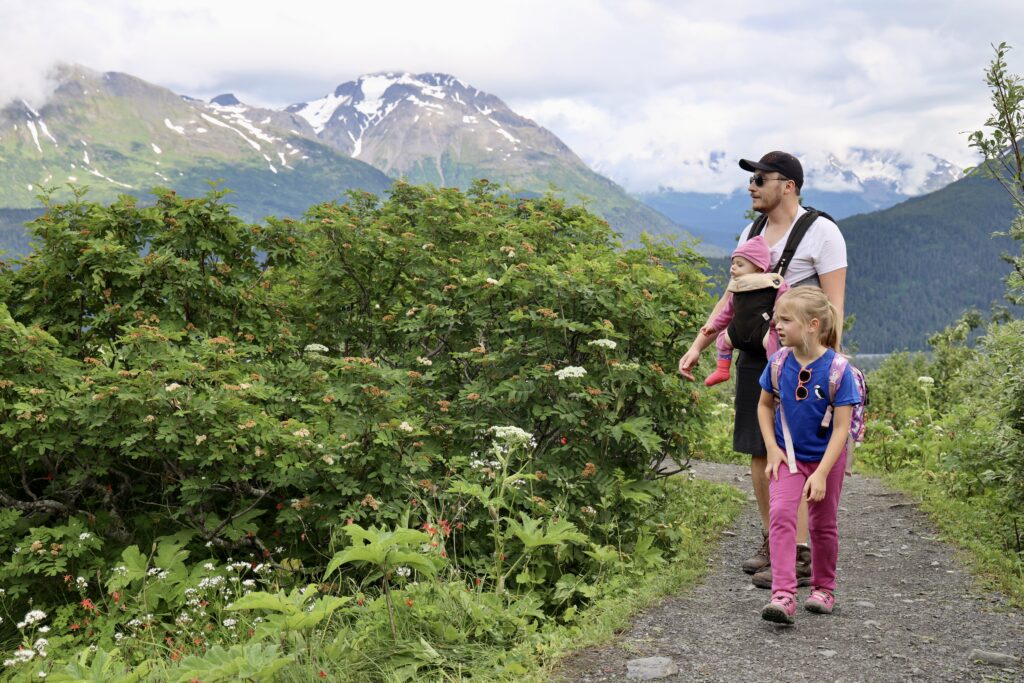
Everything you need to know about visiting National Parks with kids
After visiting 20 National Parks with our kids and experiencing their unique beauty, we have put together a guide detailing the essentials of planning and participating in park programs to ensure a rewarding family adventure in the National Parks.
Continue reading →
We also recommend stocking up on snacks and picnic supplies before entering the park, as there are no major grocery stores inside the park boundaries. The town of Beatty, about 7 miles outside the park, also has a few small markets.
Dining options in Death Valley National Park
There are limited dining options inside Death Valley National Park:
- The Ranch at Death Valley has two restaurants.
- The Inn at Death Valley has a casual ranch-style restaurant.
- Stovepipe Wells Village has a casual saloon and a restaurant.
- The Furnace Creek Visitor Center offers premade sandwiches and chips.
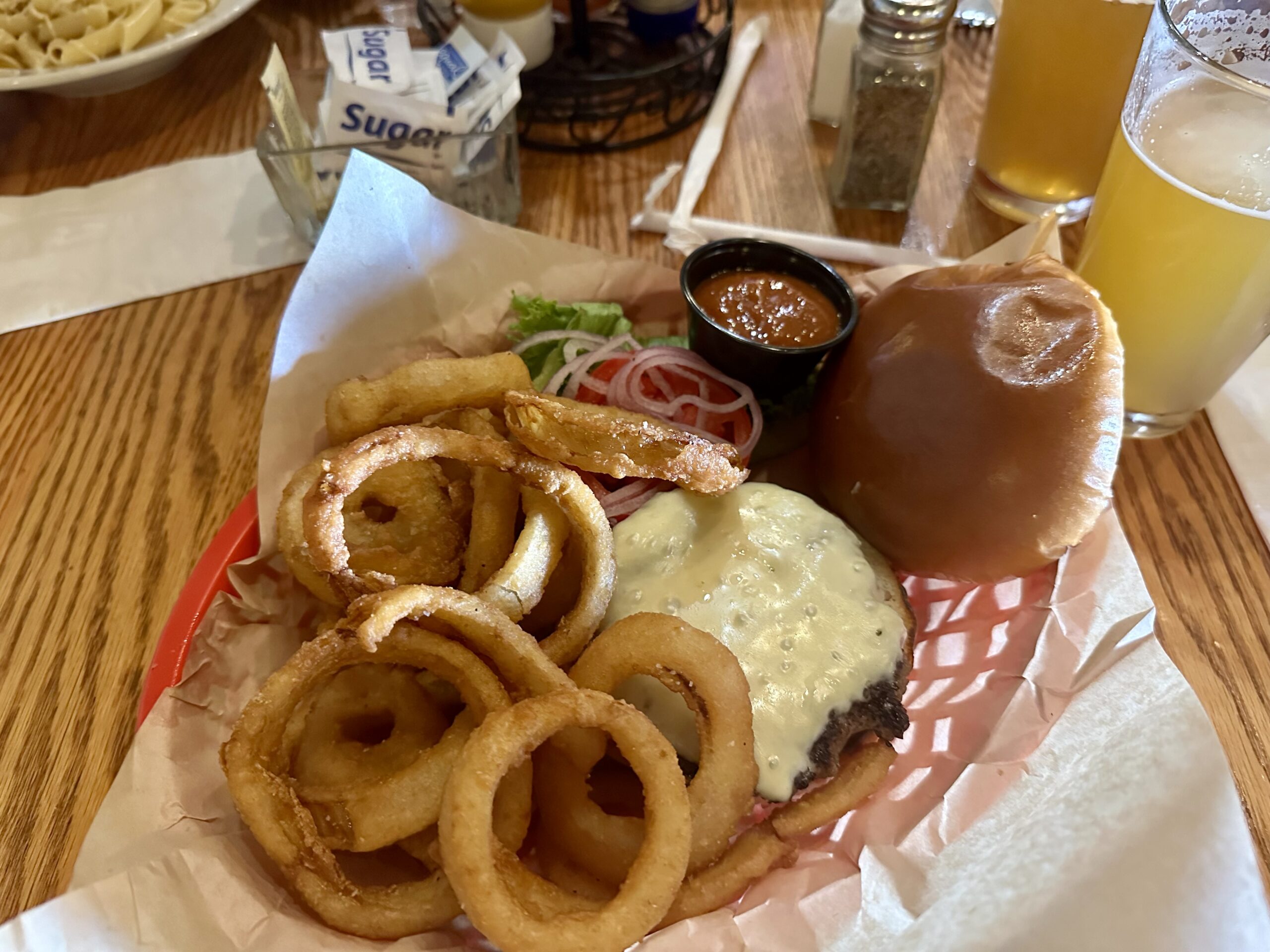
National Park Map
Find the Death Valley National Park Map here.
Entrance fees to Death Valley National Park
The entrance fee to Death Valley National Park is $30 per vehicle, and it is valid for 7 days.
If you plan to visit three or more National Parks within 12 months, we suggest purchasing an interagency Annual Pass named America the Beautiful. The Annual Pass costs $80 and remains valid for one year from the date of purchase. You can use this pass to enter any National Park in the United States and other units of the National Parks System for free.
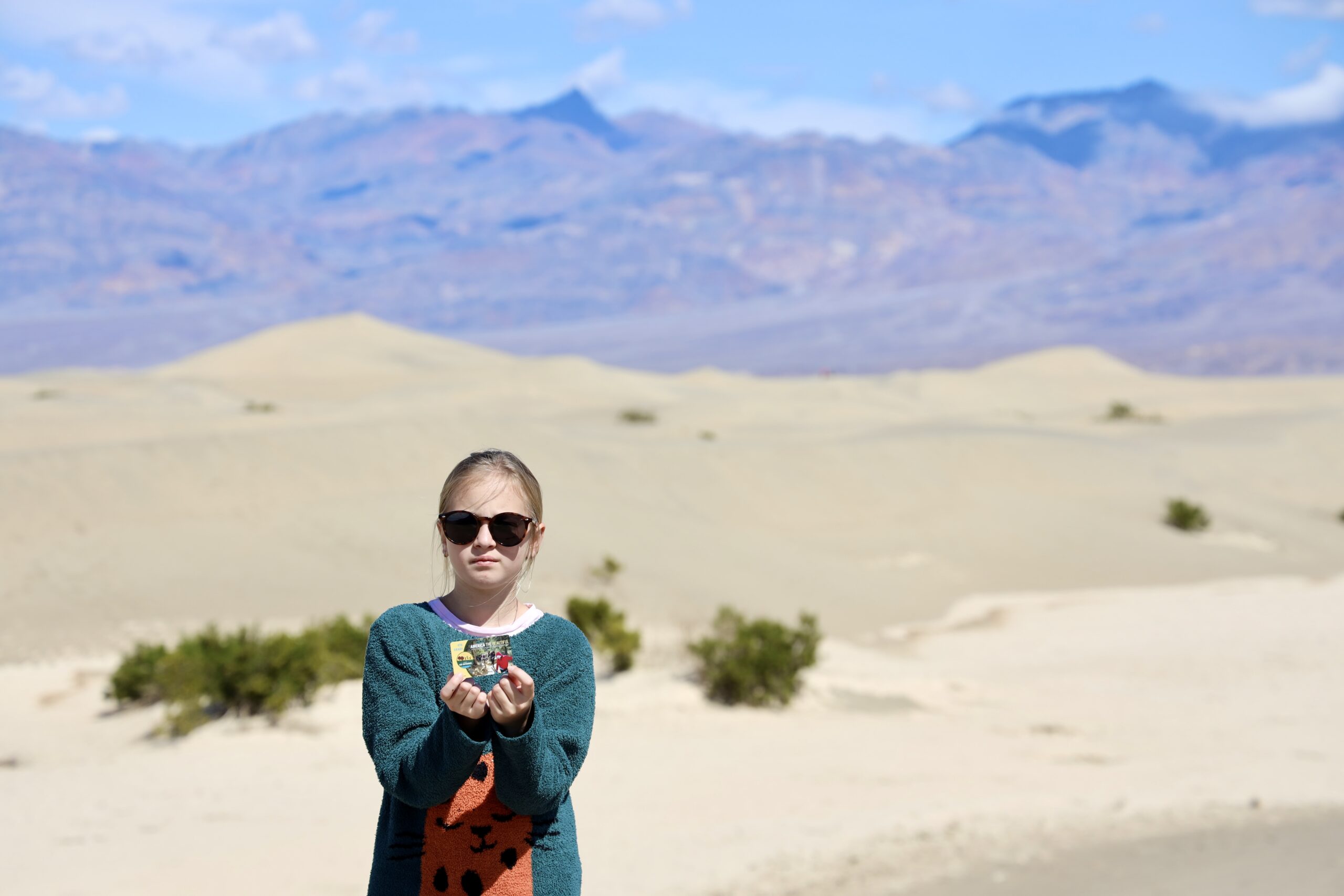
💡Good to Know
Did you know that fourth-graders can get a free annual pass to visit National Parks? To obtain the free pass, fourth-grade students should visit the Every Kid Outdoors website and download a voucher.
The voucher is valid from September 1st to August 31st (for the school year when the student is in fourth grade). This pass grants free entry for fourth graders, all other kids in the group, and up to three accompanying adults (or an entire car).
Furnace Creek Visitor Center, Death Valley National Park
Every National Park has a Visitor Center, which serves as an administrative building. If you’re visiting a particular National Park for the first time, make sure to stop by the Visitor Center first. It’s the perfect place to learn about the park and get answers to all your questions from a Park Ranger.
Furnace Creek Visitor Center at Death Valley National Park also has a small museum and shows educational movies about the park’s history. While different locations may vary slightly, this Visitor Center also offers some premade sandwiches to grab and a gift shop where you can purchase souvenirs.
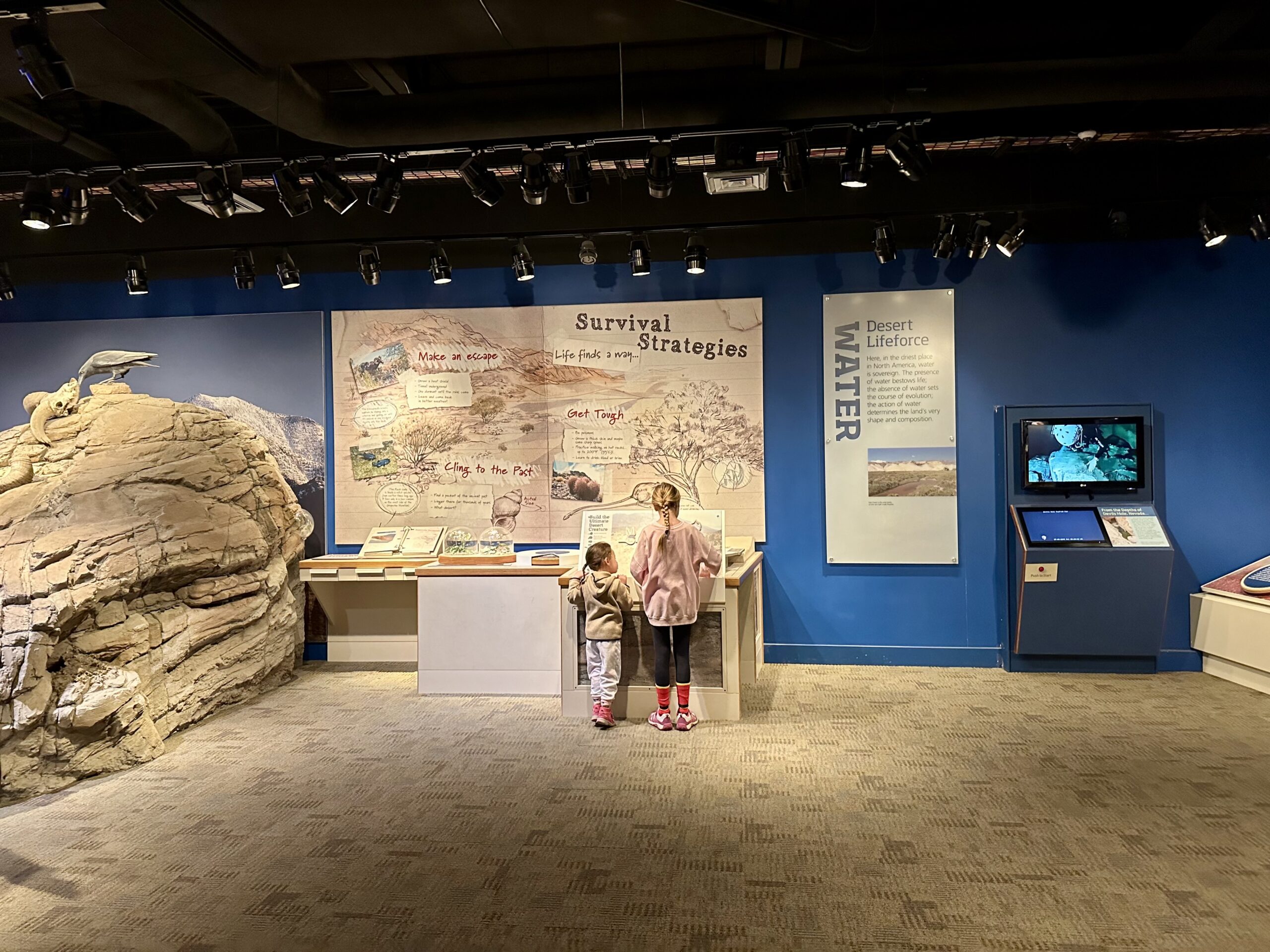
Best time to visit Death Valley National Park
The best time to visit Death Valley National Park depends on your preferred weather and experience. We have been to the park twice, in March and November, and preferred the springtime. Here are the key considerations:
Winter (December through February)
This is the most comfortable time for visiting Death Valley due to the mild temperatures, with daytime highs averaging in the 60s to 70s Fahrenheit (around 15-25°C) and cooler nights. This is a great time for hiking and exploring the park. However, nights can be cold, sometimes dropping to freezing, so you’ll need to pack accordingly.
Spring (March through May)
Early spring is one of the best times to visit, especially if you’re interested in seeing wildflowers. Flower blooms depend heavily on the rainfall during the winter, with peak blooms typically occurring in late March and early April. Temperatures are warmer than in winter, making it still comfortable for exploring. By late May, temperatures start to climb, and it can begin to feel quite hot, especially on trails exposed to the sun.
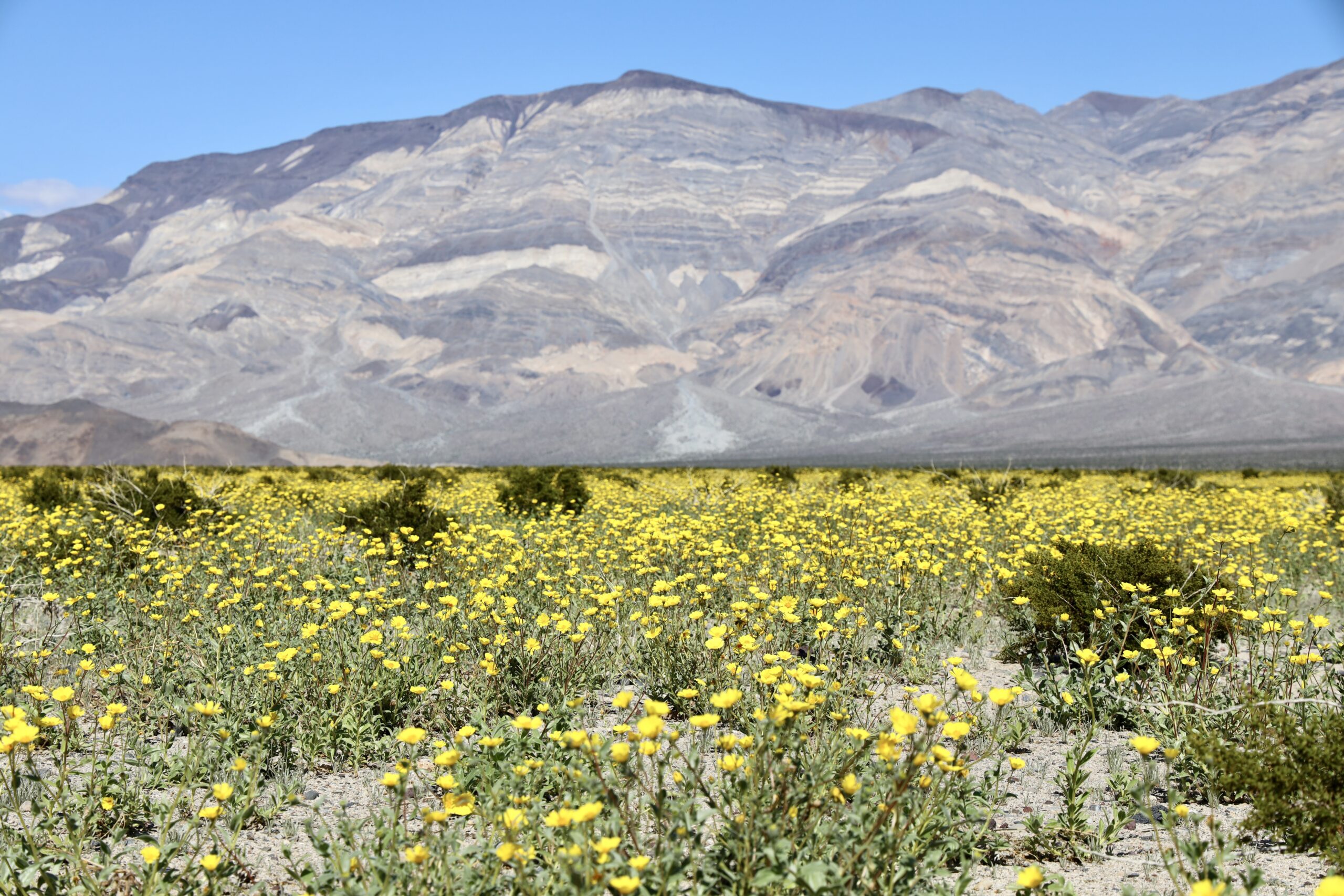
Summer (June through August)
Summer in Death Valley is extremely hot, and it’s known as the hottest place on Earth. Daytime temperatures can exceed 120°F (49°C), and even nighttime temperatures can be very warm. This season is generally not recommended for visits unless you are well-prepared for the extreme heat, and activities are limited to early mornings or very late evenings.
Fall (September through November)
Temperatures begin to decrease, making it more comfortable for visitors. Early fall can still be quite hot, but by late October and November, the weather becomes more manageable for outdoor activities.
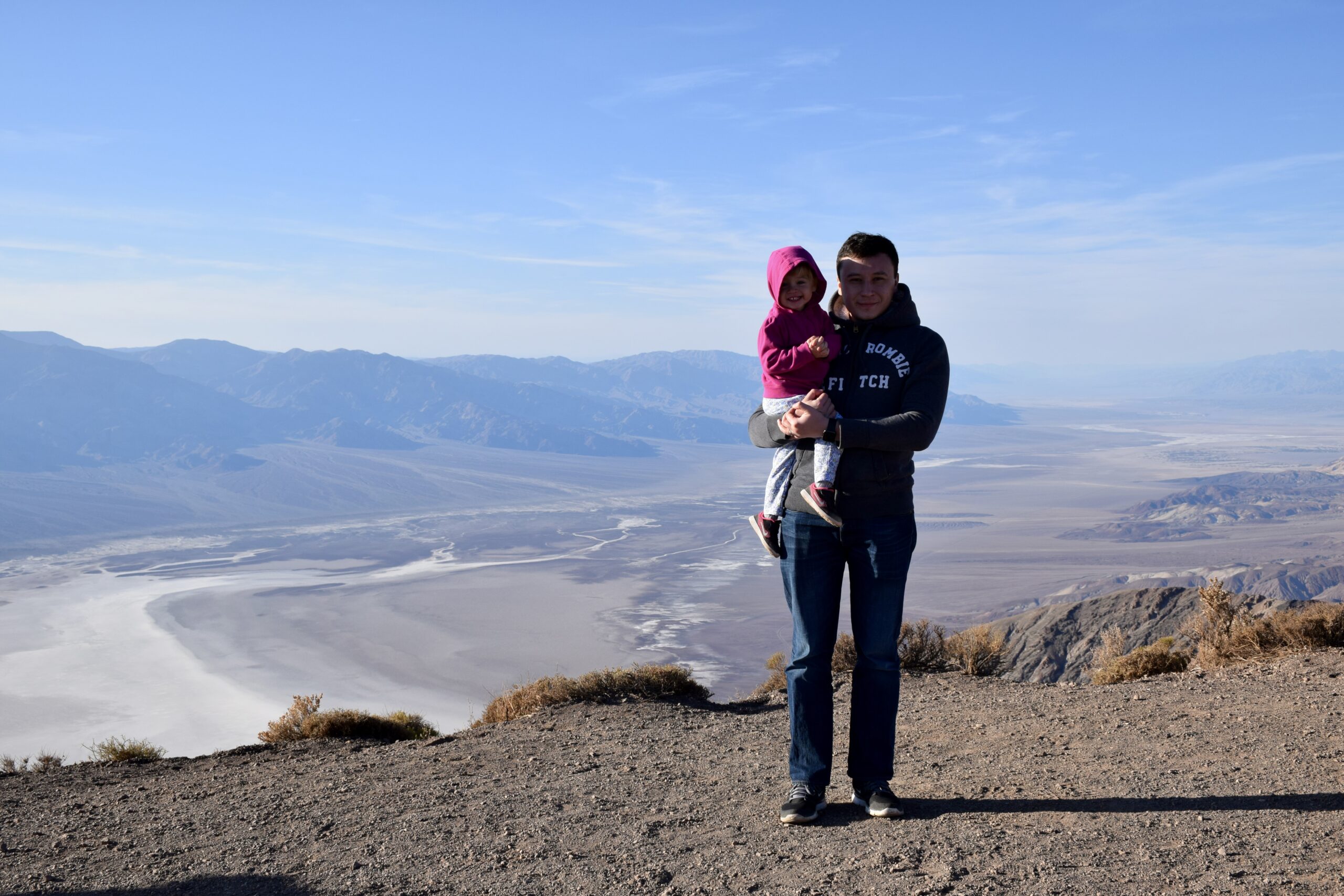
Kid-friendly hikes in Death Valley National Park

Badwater Salt Flat, Death Valley National Park
Trailhead: Badwater Salt Flats trailhead, about 30 minutes drive from Furnace Creek Visitor Center
Round-trip Distance: 1-mile round trip
Time: 1.5 hours
Level: Easy
Elevation: no
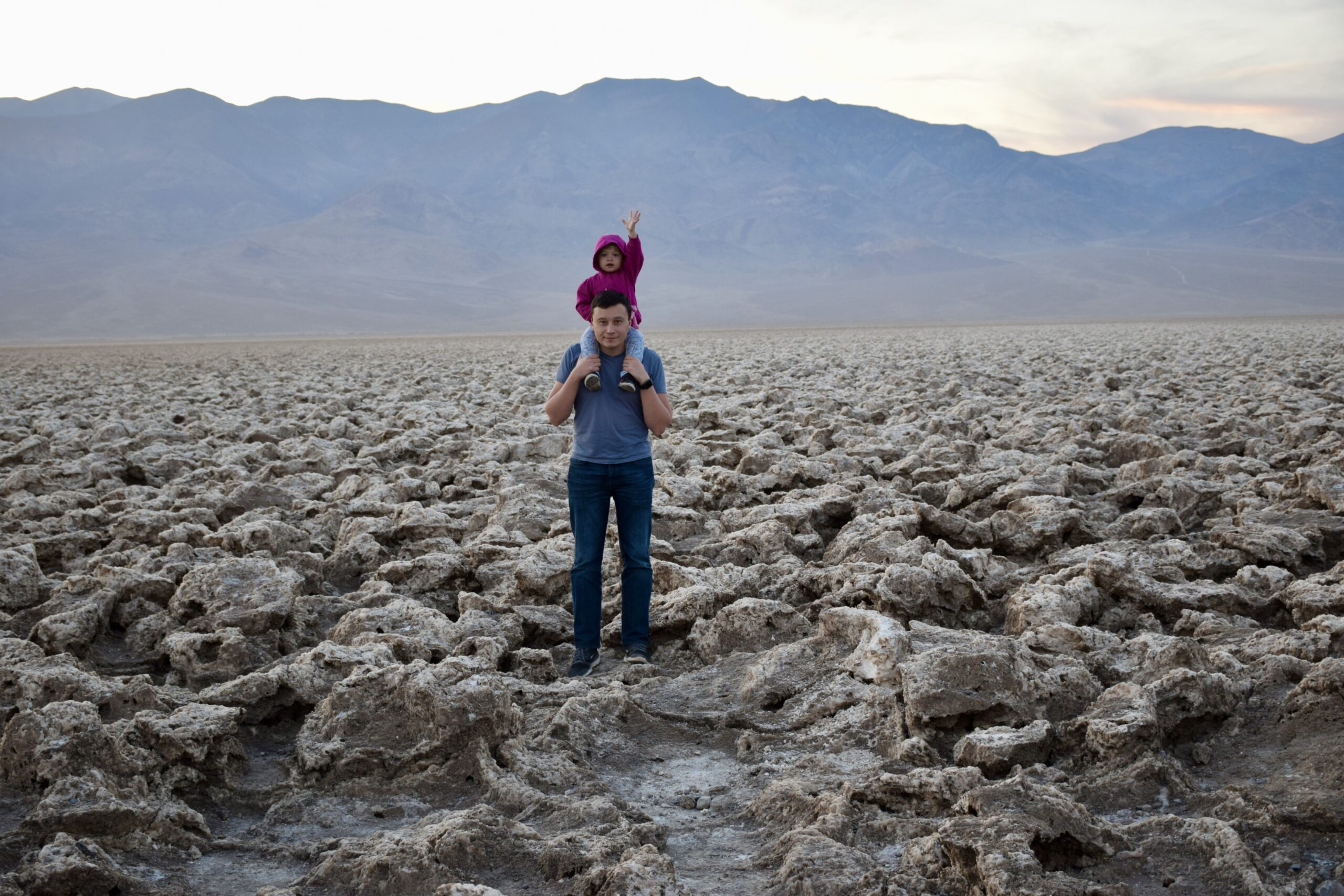
Descend to Badwater Basin, North America’s lowest point at 282 ft (86 m) below sea level!
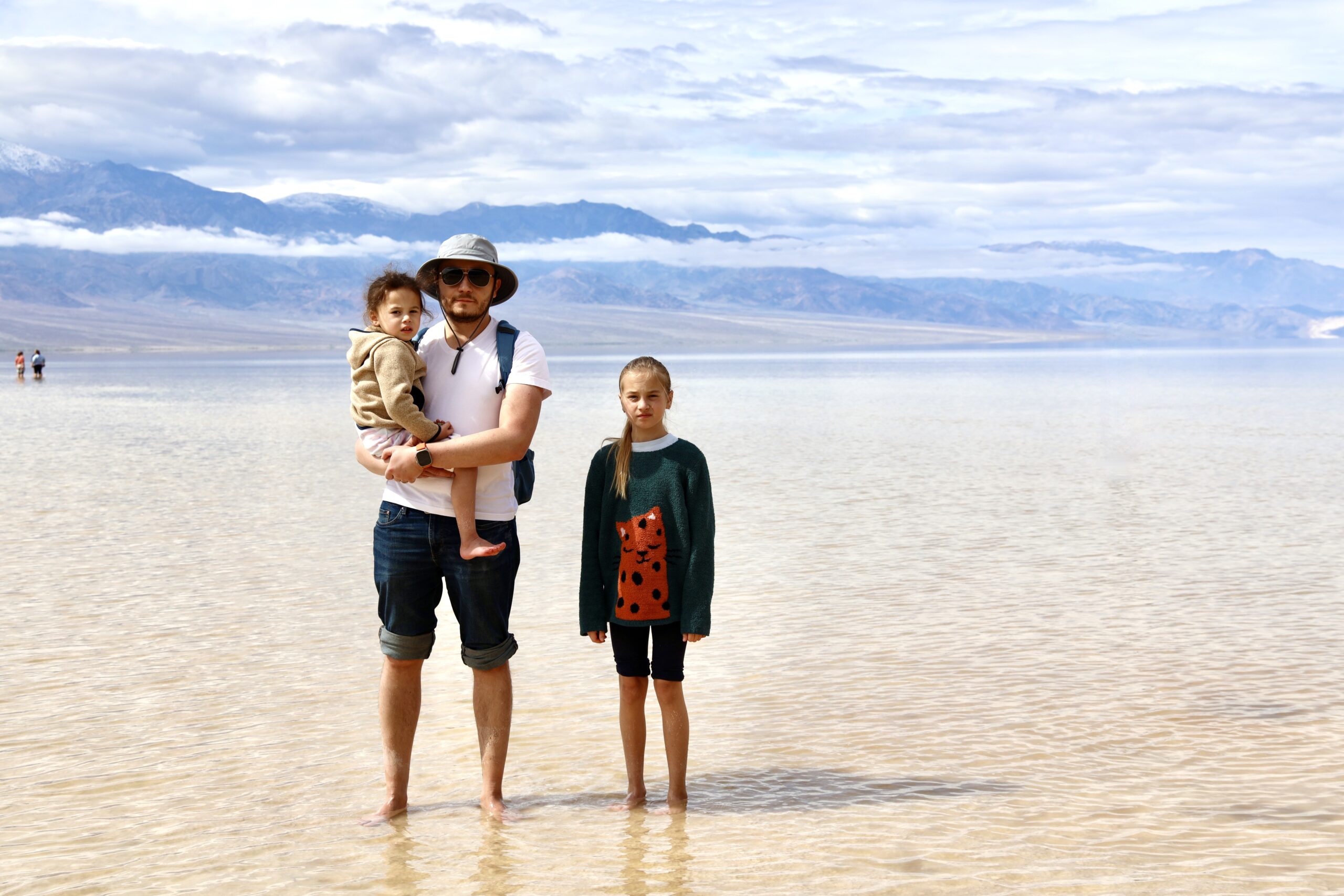
While you would usually enjoy walking over 200 sq. miles of salt flats, this year, we had a chance to walk on an ancient lake that had evaporated thousands of years ago.
Last year, heavy rains formed a temporary lake, which brought life back to the previously barren landscape. Earlier this year, visitors were even able to enjoy the unique experience of boating on the sparkling waters. However, it should be noted that the lake has since become too shallow for boating.
Pro tip: Make sure to wear water shoes when exploring Lake Manly, as the salty bed can be rough on bare feet.
Badland Loop, Death Valley National Park
Trailhead: Zabriskie Point on CA-190, located 3.5 miles east of Badwater Road
Round-trip Distance: 2.7 miles round trip
Time: 1:40 hours
Level: Moderate
Elevation: 535 ft.
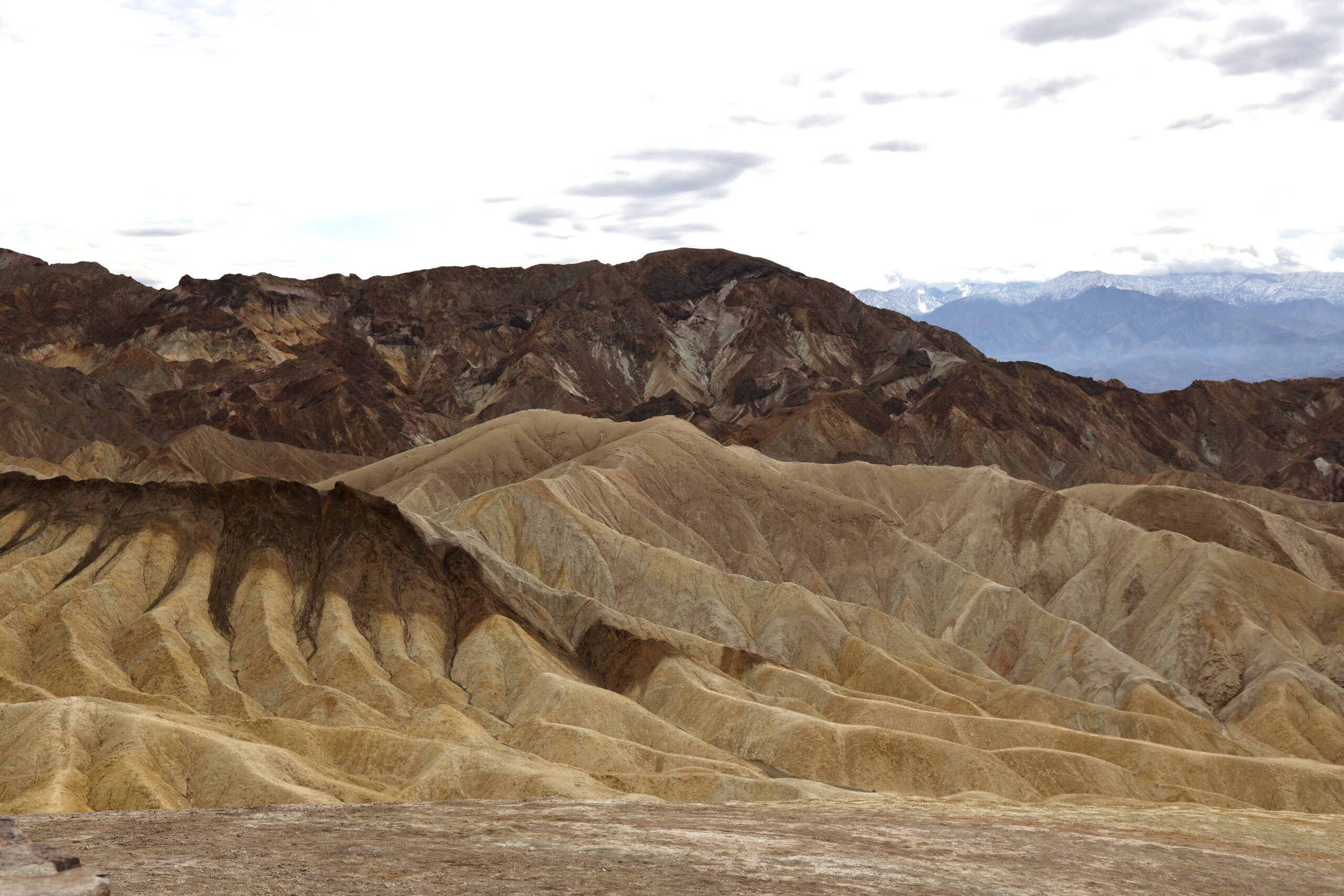
The Badlands Loop begins at Zabriskie Point, the most popular viewpoint in the park. The loop winds through the colorful badlands composed of an ancient lakebed. You can absolutely just stop at Zabriskie Point and admire the view from above, but if you have extra time, we highly recommend taking this relatively easy hike down.
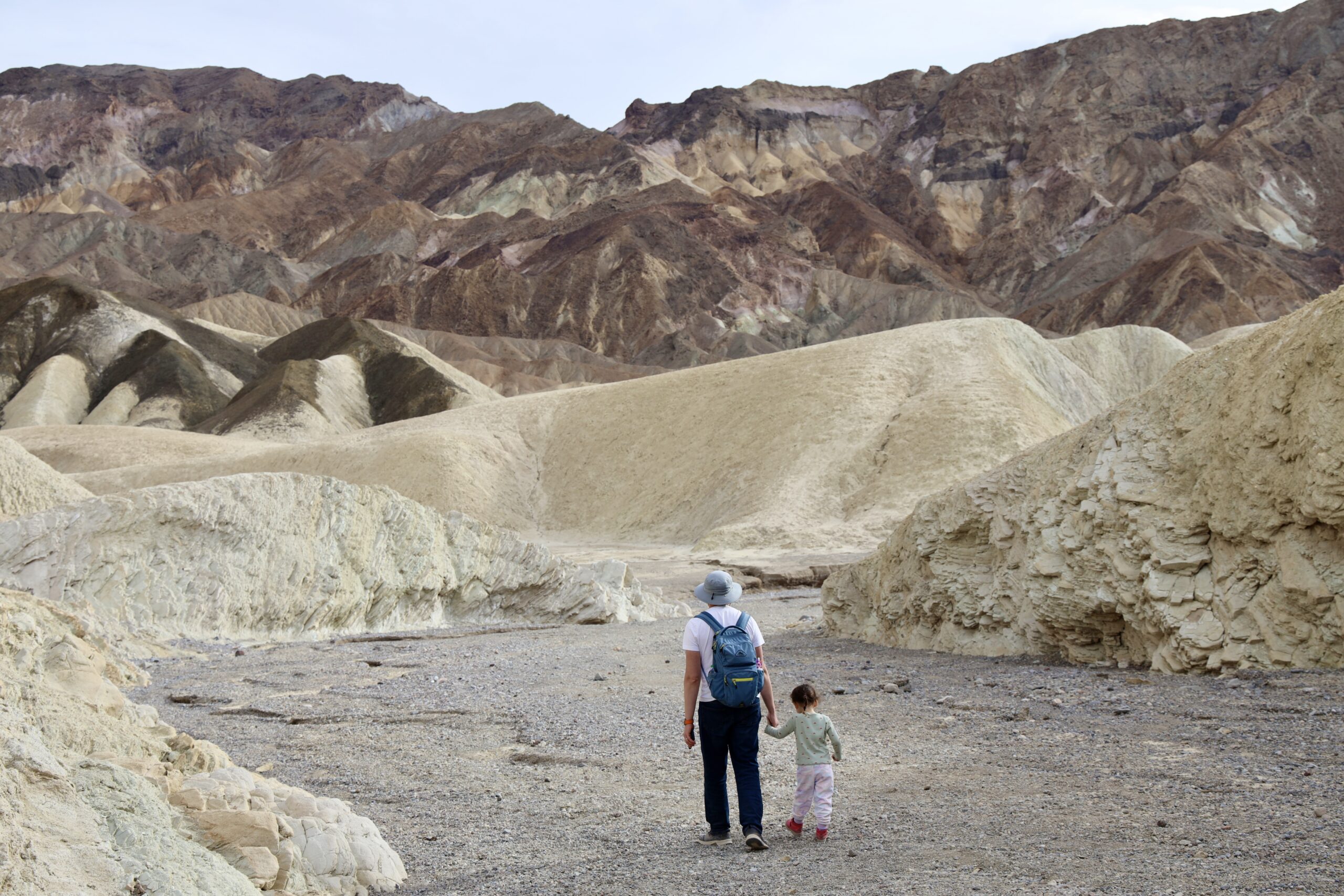
Mesquite Flat Sand Dunes, Death Valley National Park
The Mesquite Flat Sand Dunes are a prominent feature in Death Valley National Park. Located near Stovepipe Wells, these accessible dunes are popular for their picturesque landscapes and are composed of various shapes, including crescent, linear, and star formations. Originating from sand supplied by the Cottonwood Mountains, these dunes support a range of desert plant and animal life.
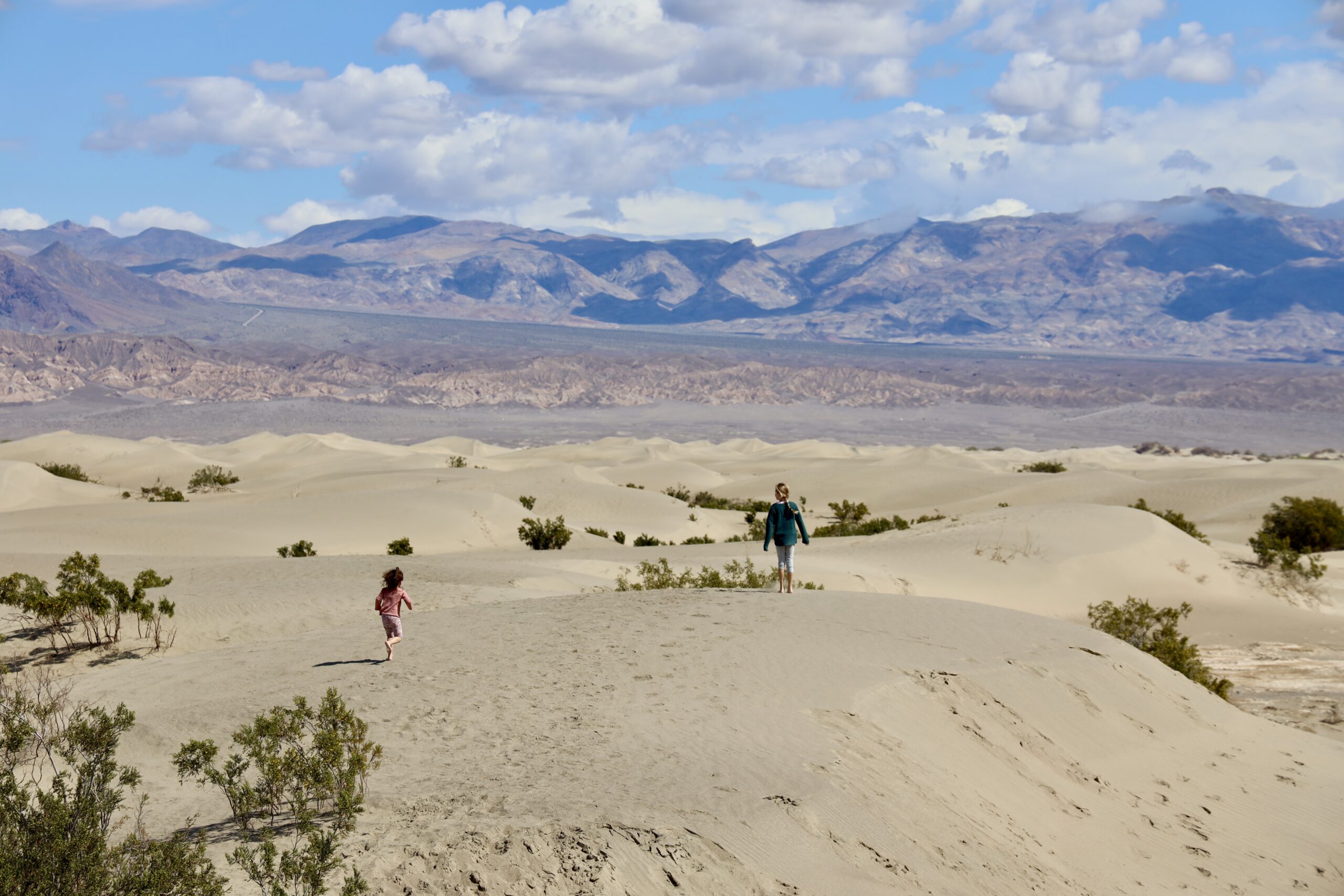
You can easily reach the dunes via a short drive from Furnace Creek, with a parking area off Highway 190. Interestingly, there are no designated trails, allowing free exploration, although you can hike to the highest dune in the area. That would take you around 1.5 hours (2 miles) out and back.
We spent some time running up and down the dunes and feeling the warm sand between our toes, the girls loved it.
Artists Palette Vista, Death Valley National Park
Make sure to stop by the Artists Palette Vista, a highlight along the Artists Drive Scenic Loop. Here, you can see an array of colors, including red, orange, yellow, blue, pink, and green, splashed across the hills. These colors are a result of volcanic deposits rich in compounds such as iron oxides and chlorite, which create a beautiful rainbow effect.

Dante’s View, Death Valley National Park
Dante’s View is a stunning viewpoint in Death Valley National Park. It offers one of the most breathtaking panoramic vistas of the central part of the valley. Situated at an elevation of about 5,475 feet (1,669 meters) above sea level, it provides a unique perspective on the natural beauty and extreme environment of Death Valley.

Wildflowers and wildlife at Death Valley National Park
In Death Valley National Park, you can encounter diverse desert-adapted wildlife, including desert bighorn sheep, coyotes, kit foxes, kangaroo rats, bobcats, and desert tortoises.
However, we did not quite expect to see donkeys in Death Valley. These donkeys are actually invasive burros, descended from the African wild ass and were introduced to North America. Unfortunately, invasive burro populations grow at approximately 20% per year, causing damage to native vegetation and spring ecosystems and competing with native wildlife such as bighorn sheep and desert tortoise for limited resources.
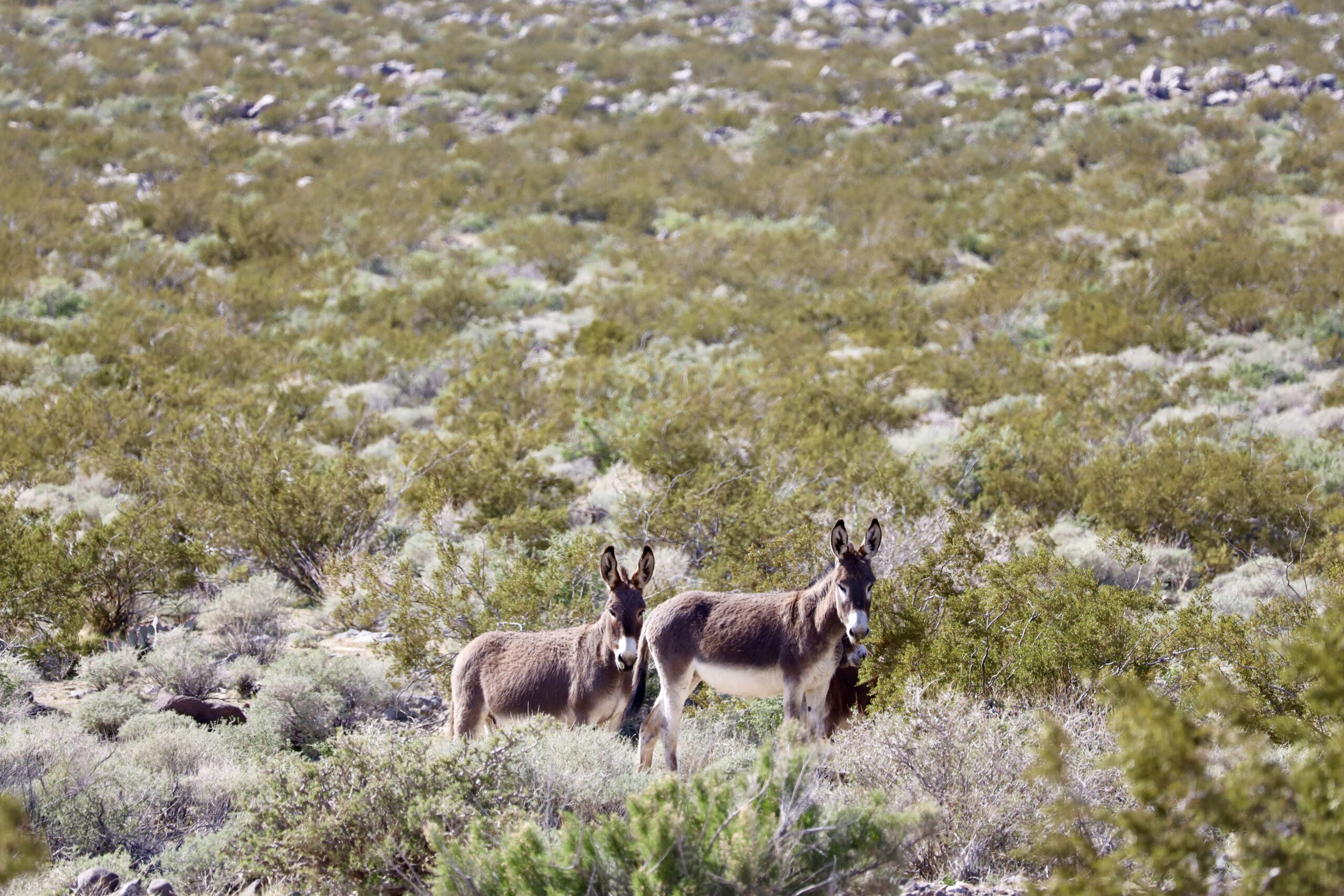
While Death Valley is primarily known for its extreme temperatures and barren landscapes, it experiences occasional bursts of floral beauty during spring, typically from late February to April. Among the iconic blooms are Desert Gold, with its golden carpets, and the pinkish-purple Desert Five-Spot.
This specific location, captured in the photo below, is situated near the intersection of Panamint Valley Rd and Highway 190. The sight of vast meadows covered with golden flowers, with snowy peaks in the backdrop, was simply breathtaking!
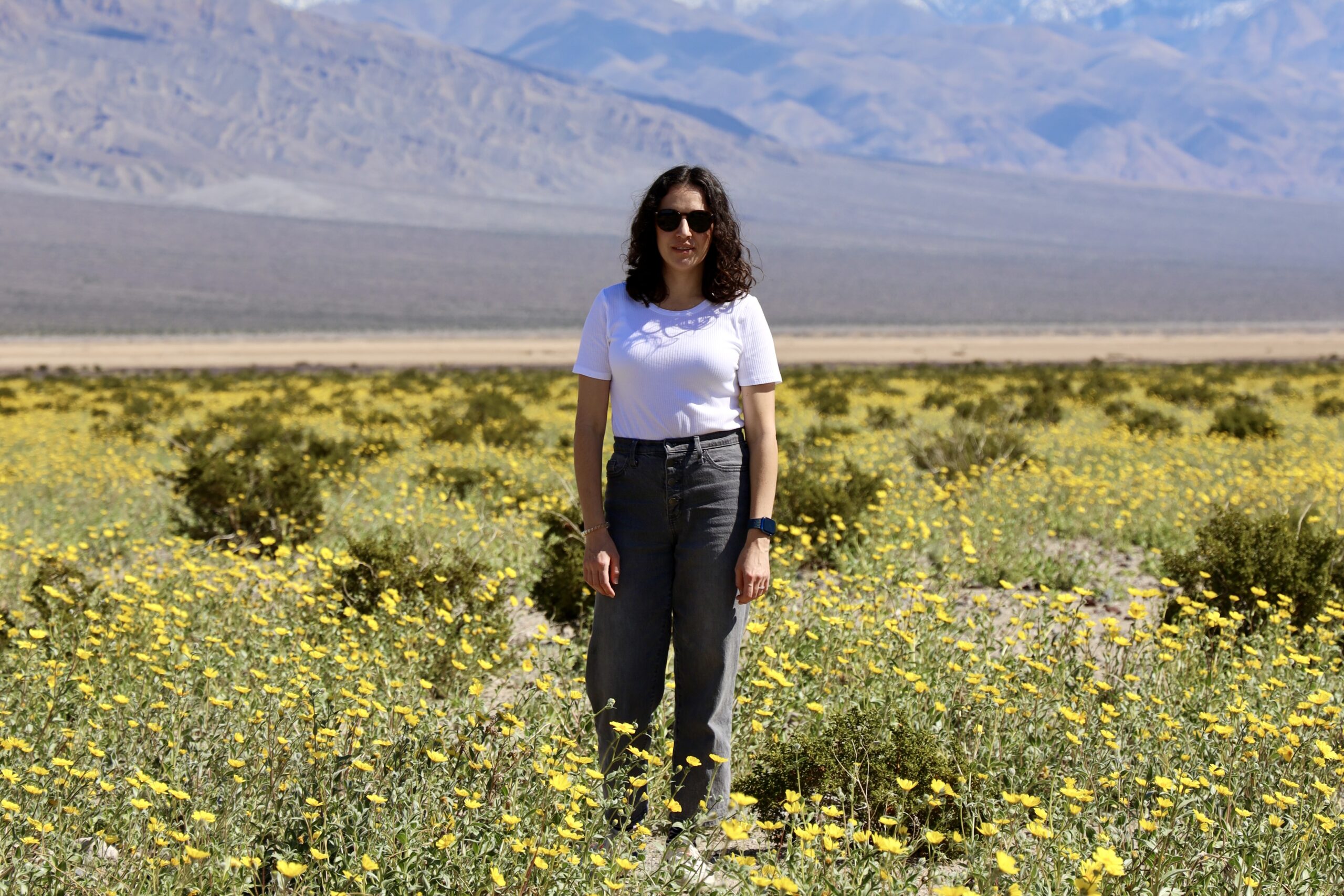
Junior Ranger program at Death Valley National Park
Did you know that every National Park in the U.S. offers a Junior Ranger Program? Children can earn a Junior Ranger Badge by completing an activity book, answering questions about the park to a Park Ranger, and taking an oath.

This program is an excellent way to get kids excited about nature and the great outdoors. Additionally, it’s a fantastic opportunity for families to learn about the National Parks together.

When you arrive at the park, stop by the Visitor Center first to get an activity book to fill out after the day of exploring, and come back later to take an oath and receive a little wooden Junior Ranger Badge.
Leave No Trace
Leave No Trace is a set of principles that are vital for preserving the natural beauty and ecological integrity of National Parks. When we visit these parks with our kids, we always follow these guidelines, which include planning trips responsibly, disposing of waste properly, leaving natural objects undisturbed, minimizing campfire impacts, respecting wildlife, and being considerate of other visitors.
By following these rules, we help ensure that these precious landscapes remain pristine and accessible for future generations, and we teach important values of stewardship and respect for nature.


